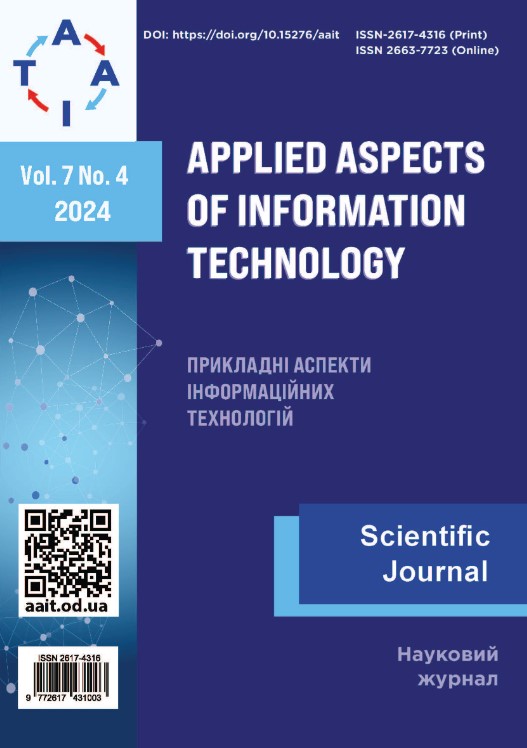Evaluation of the accuracy of human eye movement system identification using step test signals
DOI:
https://doi.org/10.15276/aait.07.2024.20Keywords:
information technologies, eye movement system, nonlinear dynamic identification, eye-tracking technology, Volterra models, modeling accuracy, human neurophysiological state diagnosticsAbstract
For mathematical modeling of the human eye movement system (EMS), integral nonlinear models are employed, which simultaneously account for the nonlinear dynamics and inertial properties of the research object. Based on experimental "input-output" studies of the EMS, diagonal cross-sections of multidimensional transient characteristics (MTCs) of second and third orders are determined. Experimental data are obtained using innovative eye-tracking technology, which allows the registration of ocular responses to visual test stimuli. The aim of this study is to investigate the accuracy of EMS identification based on eye-tracking data by evaluating errors in MTC computation using three nonlinear dynamic identification methods: approximation, compensation, and the least squares method (LSM), based on models in the form of integro-power series (IPS) and integro-power polynomials (IPP). The research object is the process of nonparametric EMS identification using Volterra models in the time domain. The research subject involves computational and software tools for determining EMS dynamic characteristics using eye‑tracking data and analyzing the accuracy of models obtained with the specified methods. Accuracy evaluations were conducted for various EMS models (linear, quadratic, and cubic) based on three responses to test signals of varying amplitudes. For the approximation method and LSM, identical models were obtained when using the same test signals, as the models converge within the IPS convergence domain. The compensation method requires minimal computational resources compared to other methods; however, the models obtained using this approach exhibit significant errors, rendering them unsuitable for diagnostic studies. Third-order models showed instability in the estimates of transient characteristics. Error analysis of EMS dynamic characteristic estimations revealed that the quadratic model developed using LSM based on three responses is the most accurate among the studied models. Thus, for further investigations of human psychophysiological states based on nonlinear dynamic EMS models derived from three responses, the quadratic IPP model is recommended.










